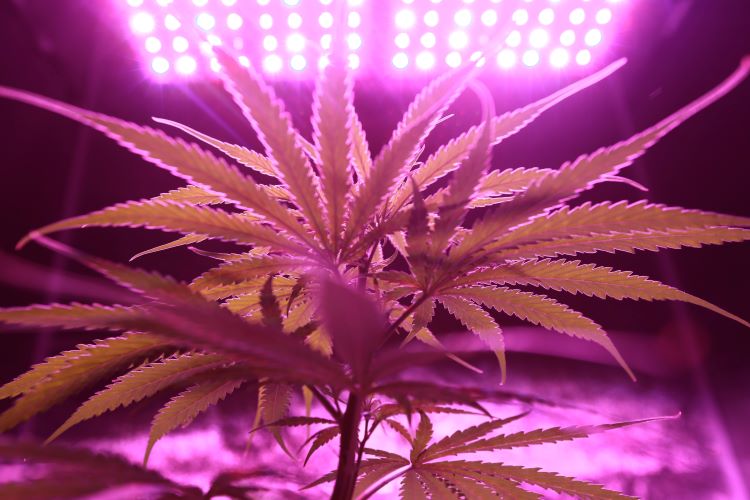The cannabis industry is expanding rapidly, with the U.S. market expected to reach nearly $30 billion by 2025. But as any weed entrepreneur knows, this nascent marketplace is fraught with challenges: businesses struggle to obtain bank accounts and insurance, costly regulations cut into profit margins, and most traditional marketing channels are off-limits.
Aside from the obvious challenges, there are a number of lesser-known and emerging issues that are forcing legal cannabis enterprises to re-examine how they do business. According to 420expertadviser cannabis industry will boom a lot in upcoming years and business of american seed banks will benefit a lot from this!
Inconsistent Supply & Demand
States like Florida and Nevada don’t have the kind of climate that’s hospitable to cannabis growth, so cultivators rely on costly indoor facilities. This results in more expensive cannabis, lower-quality products, and a demand that often exceeds supply.
By contrast, states like Oregon and California—where American cannabis was traditionally grown in the prohibition days—are growing more weed than they even know what to do with. One report indicated that California is growing enough weed to crash the market. According to the report, California is producing up to 9 million pounds of cannabis every year, but the wholesale market can only support about 2 million. Oregon growers are also growing twice as much cannabis as they can support.
Oversupply leads to waste. The value of cannabis plummets and growers are forced to dispose of the excess supply or slash prices. Ultimately, the entire supply chain loses money, and some cultivators go out of business. But a number of companies are taking action in the hopes of quelling the oversupply problem.
Organizations like the Craft Cannabis Alliance are pushing for legislation that would end the prohibition of interstate cannabis, thus allowing oversupply states like California and Oregon to provide cannabis to states with greater demand. The Craft Cannabis Alliance has already created a successful interstate commerce bill in Oregon and is pushing for similar bills to get on the ballots in California and Colorado. A federal bill, the State Cannabis Commerce Act, has also been presented to Congress.
At the local level, organizations are fighting the oversupply problem by boosting craft cannabis businesses. One organization, Flow Kana, helps small farmers to market their cannabis and connect with dispensaries. By supporting and promoting small farms, groups like Flow Kana and the Craft Cannabis Organization are shifting the demand away from the giant cannabis mega-corporations in the hopes of leveling the playing field and preserving the family-run farms that have sustained the Pacific Coast for generations.

Costly Product Returns
Cannabis suppliers are losing millions to product returns. One of the hardest-hit companies is Canada-based Canopy Growth Corp. Last November, the company reported that it had lost $20.5 million to returned products and was expecting another $6.4 million in returns. Other companies, like CannTrust Holdings Inc., have also reported excessive losses due to returns.
Products may be sent back to cannabis suppliers for a number of reasons, including lack of sales or poor product quality. If a supply is mishandled during transport, the cannabis may grow mold or dry out. At that point, it’s considered unusable, and the supplier absorbs the loss.
Still, savvy businesses like Canopy are continuing to grow their revenue despite these hiccups. Canopy has successfully weathered the storm by branching out to offer additional, less-disposable cannabis products like paraphernalia and accessories. They’ve also opened up a line of their own dispensaries, which allows them to cut out the middleman and maintain control over both the supply and the retail operations.
Difficult Waste Management
Cannabis companies can’t simply toss their unused supply into the garbage and roll it out to the curb. There are complex and costly regulations involved in disposing of marijuana products. Before being removed from the facility, all marijuana waste must be rendered “unusable and unrecognizable.”
It needs to be mixed with at least 50% non-cannabis waste and stored in a secure receptacle. Then it needs to be transported to an authorized landfill, composted, digested, or incinerated. As if that wasn’t complicated enough, all waste needs to be tracked and traced to confirm that it was properly eliminated. It’s a costly and time-consuming endeavor that can jeopardize a business’s license if not handled properly.
Thankfully, a new industry is emerging to meet this need. In 2016, two young entrepreneurs came together to form GAIACA, the nation’s first fully licensed cannabis waste disposal company. GAIACA offers their clients a full waste management plan, providing them with secure drums for waste removal and then handling all of the dirty work in accordance with state and federal regulations. As cannabis continues to become legal throughout the country, the need for effective waste management will continue to grow.
New Challenges Birth New Solutions
As new challenges emerge in the fast-expanding cannabis market, the savviest businesses will continue to devise practical solutions. The important thing for any cannabis entrepreneur is to be aware of these challenges. When you understand what you’re up against, you can take steps to avoid the pitfalls that plague so many other businesses.



